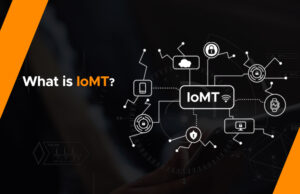The global healthcare cybersecurity market has been experiencing substantial growth, with North America emerging as one of the largest markets. In this article, we will explore the reasons behind this growth, the challenges faced by the industry, and the measures being taken to ensure data protection in the healthcare sector.
Market Growth and Trends
A recent report from Vantage Market Research states that the global healthcare cybersecurity market was worth US$11.17 billion in 2021 and is projected to grow at a CAGR of 18.1% between 2022 and 2028. North America is expected to be a key player in this market due to its high adoption of digital healthcare solutions.
North American Market Dominance
The healthcare cybersecurity market is greatly influenced by the United States, where healthcare providers and payers invest significantly in cybersecurity solutions to safeguard patient information. North America is also home to several major players in the healthcare cybersecurity market, further solidifying its position as a leading region in this space.
Increasing Adoption of Digital Healthcare Solutions
Digital healthcare solutions have become increasingly popular in North America due to their ability to streamline processes, enhance patient care, and reduce costs. This increased adoption of digital solutions has led to a greater need for robust cybersecurity measures to safeguard sensitive patient data and protect healthcare organizations from cyber threats.
Risks and Threats to Healthcare Organizations
The growing reliance on digital solutions has also made healthcare organizations more vulnerable to cyberattacks. Hackers target these institutions to extort money and trade-off stolen medical records, often demanding ransom from patients in exchange for not using their records to create fake IDs and sell them on the deep web.
1. Targeting Medical Devices and Equipment
Apart from health data, cybercriminals also target medical devices and equipment lacking security controls. These devices are often not seen as potential risk areas by healthcare platforms, but if left unaddressed, this threat can have severe consequences for patient health, delay treatments, and even lead to fatalities.
2. Protecting Patient Data and Electronic Health Records
Healthcare organizations must protect medical information and Electronic Health Records (EHRs) from unauthorized access. This can be achieved by implementing a robust online protection system, providing professional training to staff on cybersecurity risks, regularly backing up data, and securing databases with electronic authentication methods such as Multi-Factor Authentication (MFA) and Single Sign-On (SSO).
3. Implementing a Robust Online Protection System
A strong online protection system suited to the healthcare platform’s culture and cyber safety needs is vital for safeguarding health systems and keeping cybercrime at bay. This includes regularly updating technology and software and conducting security audits to identify and address potential vulnerabilities.
4. Professional Training for Staff
Healthcare staff should be trained on the risks, challenges, and ways to avert cyber threats. This training should be ongoing and updated regularly to ensure employees know the latest threats and best practices for mitigating them.
5. Regular Data Backup and Database Security
Regularly backing up data and securing databases with electronic authentication methods like MFA and SSO are crucial measures for protecting sensitive information. These methods add an extra layer of security to help prevent unauthorized access to patient data.
Challenges Faced by Healthcare Organizations
While there is a growing awareness of the importance of cybersecurity in healthcare, several challenges act as deterrents to implementing robust cyber safety measures.
1. High Costs
The costs involved in implementing comprehensive cybersecurity measures can be prohibitive, particularly for smaller healthcare organizations. This can make it difficult for these organizations to invest in the necessary technology and training to protect their systems and patient data.
2. Stricter Laws and Regulatory Compliance
Adhering to regulatory compliance, such as the Health Insurance Portability and Accountability Act (HIPAA) and other regulations in the United States, can be challenging for healthcare organizations. These regulations often have strict penalties for non-compliance, adding pressure to strained healthcare providers.
Overcoming Challenges and Moving Forward
To ensure that all healthcare platforms, especially those run by smaller players, can reap the potential of robust cybersecurity measures, addressing the challenges of high costs and regulatory compliance is crucial.
1. Collaborative Efforts and Shared Resources
Collaborative efforts and shared resources can help reduce the financial burden on smaller healthcare organizations. This might include partnering with larger organizations, joining industry-specific cybersecurity consortia, or leveraging government resources to help implement robust cyber safety measures.
2. Streamlining Compliance Processes
Streamlining the compliance process for regulations like HIPAA can help healthcare organizations better navigate the complex landscape of cybersecurity regulation. This might involve developing clearer guidelines, providing additional resources and support, and working with industry stakeholders to ensure a more manageable compliance process.
Conclusion
As the healthcare cybersecurity market in North America continues to grow, healthcare organizations must prioritize data protection and invest in robust cybersecurity measures. By addressing the challenges of high costs and regulatory compliance, these organizations can ensure quality patient care while upholding their trust and protecting them from hackers. Safeguarding the digital health landscape will ultimately benefit healthcare providers and their patients.







